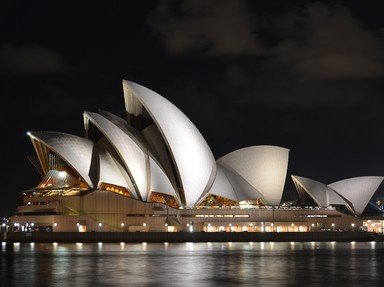Quiz Answer Key and Fun Facts
1. Jorn Utzon, a Danish architect, won an international competition to design the Sydney Opera House.
2. Fort Macquarie Tram Depot opened on the site of the old Fort Macquarie.
3. Queen Elizabeth opened the Sydney Opera House.
4. Originally, Dubbagullee, Cattle Point, on the eastern side of Sydney Cove (now Circular Quay), was named after cattle and horses that arrived with the first fleet were kept at this place.
5. Aboriginal man Bennelong persuaded the New South Wales Governor Arthur Phillip to build a brick hut for him on the point that then took his name.
6. Eugene Goossens, the Director of the NSW State Conservatorium of Music, lobbied for a suitable venue for large theatrical productions to be built at Bennelong Point.
7. During construction the roof in the shape of the sails emerged onto the Sydney skyline.
8. The Sydney Opera House became a UNESCO World Heritage Site.
9. Crowded House performed their "Farewell to The World" concert on the steps of the Opera House
10. Fort Macquarie, a square castellated battlement fort, was built at Bennelong Point.
Source: Author
1nn1
This quiz was reviewed by FunTrivia editor
Bruyere before going online.
Any errors found in FunTrivia content are routinely corrected through our feedback system.
